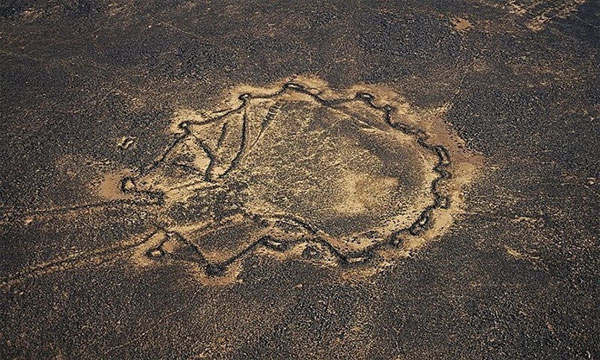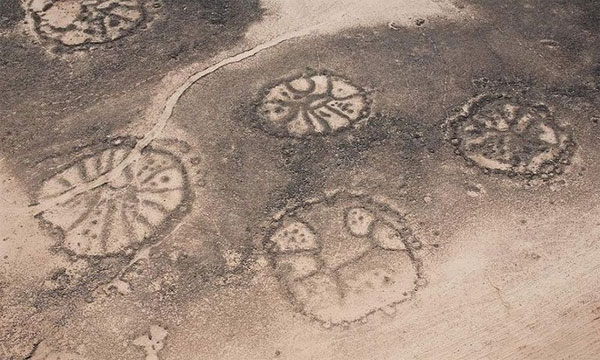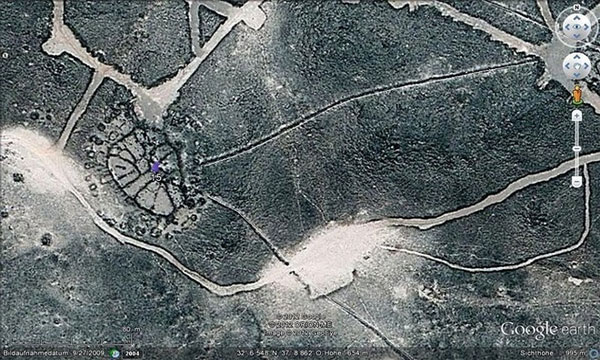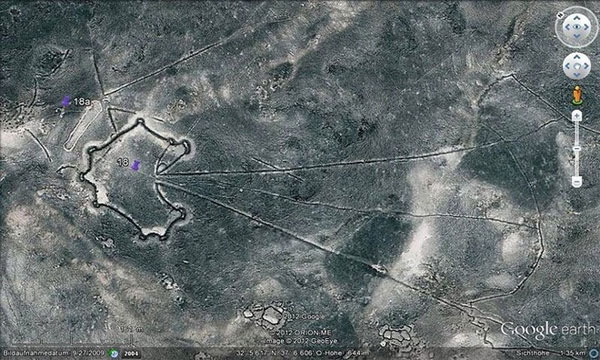Huge rock trap of the ancient people
Wearing a kite-like shape when viewed from above, this ancient building is essentially a giant trap used to hunt animals.
Detecting huge stone traps in ancient times

In the 1920s, the Royal Air Force pilot discovered many strange shapes like giant kites on deserts in Israel, Jordan and Egypt.Later, thousands of other desert kites were discovered scattered along the Arabian Peninsula and Sinai to southeastern Turkey.(Photo: GAB Gallery).

The tail of these giant "kites" are two low stone walls of different thickness and height.They gradually clustered from afar, forming a V-shaped or funnel-shaped shape.The small section at the end of the funnel is connected to a soil barrier or a circular hole.The soil fence has a diameter of several meters to several hundred meters while the walls can stretch hundreds of meters and even several kilometers.Their shape as well as archaeological evidence shows that these large stone structures serve as traps for hunting wild animals.(Photo: Pathologycloud).

In 2011, an Israeli and American archaeological group discovered a large number of bony antelope bones dating back to the 4th millennium BC in a large hole at the end of the "kite" in northeastern Syria.This finding provides direct evidence that the ancients used kite-shaped buildings to hunt antelope after the Neolithic period.(Photo: Free Republic).

Most kite-shaped works were built in 4000-2000 BC but some of the older works date back to 8000 BC. Ancient people often choose to build these giant animal traps in places with a favorable natural environment for hunting.The ground needs to be flat and lie between deep narrow narrow channels or rivers.In some places, they use 6-15 m deep pits instead of soil fences and have a sloping slope leading up to help increase the number of animals that fall into the pit.The slope also prevents animals from gaining momentum to jump out of the hole and cross the land barrier.Many stone walls are built into small cells that make animals unable to escape.(Photo: Free Republic).

A group of hunters drove large animals into trap walls and chased them to the end of the road, where they lost momentum and fell into a pit or fenced off land, then were massacred.This hunting process requires many participants.Later, the ancient people skined animals and moved the meat to where they lived.(Photo: Amazing Acient).

Antelope hunting lasts until the 19th and early 20th centuries. From a common ungulate animal in the wild, goiter is in danger of extinction in small quantities in the protected area.(Photo: The Megalithic Portal).
- 6 types of deadly pitfalls common in ancient tombs
- Ancient traps for 150 years still kill mice effectively
- Fans are excited to discover the ancient gods on Mars
- Death trap for predators of ancient times
- Discovering a huge ancient Roman theater in England
- Discover ancient stone ammunition warehouse at Ho Citadel's heritage
- The monkey knows how to break the hunter's trap
- Rydberg atom trap by optical grid
- The oldest rock painting on Pharaoh in Egypt
- Petra: The ancient city in the heart of the rock
- NASA robots detect precious clues about life on Mars
- Woman invented the 'trap' radar jamming
 Discovered an ancient centipede fossil 99 million years old
Discovered an ancient centipede fossil 99 million years old Discovered bat-like dinosaurs in China
Discovered bat-like dinosaurs in China Discovered a 200-year-old bronze cannon of the coast
Discovered a 200-year-old bronze cannon of the coast Discover 305 million-year-old spider fossils
Discover 305 million-year-old spider fossils